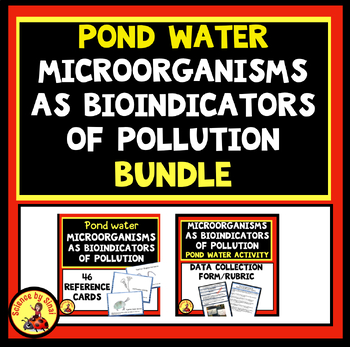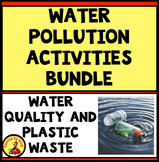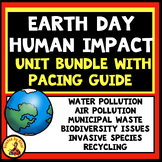Microorganisms as BIOINDICATORS OF WATER POLLUTION In a Pond Activity BUNDLE
Science by Sinai
1.4k Followers
Grade Levels
6th - 9th
Subjects
Resource Type
Standards
NGSSMS-ESS3-3
NGSSHS-ESS3-4
Formats Included
- Zip
Science by Sinai
1.4k Followers
What educators are saying
This was a great resource to use when students were viewing pond water under microscopes. I printed and spread the pictures around and they were so excited when they saw some. Thank you!
Products in this Bundle (2)
Also included in
- After teaching science for over 30 years, I finally put together my middle school and upper elementary ecology and environmental science, ecosystems, food chains and webs, biodiversity, Earth Day, STEM and CER resources! Click on the preview for complete details!The resources range from interactivePrice $252.60Original Price $315.75Save $63.15
- Here are 6 products for your human impact, water pollution unit. Students read about filtration and answer questions, create a water filter, check the excess packaging of products, go on a types of plastic scavenger hunt, and analyze the quality of a local body of water using microorganisms as bioinPrice $18.50Original Price $22.75Save $4.25
- Here is my 2-3 week unit bundle for teaching Human Impact and Earth Day as part of MS-ESS3-3, MS-LS2-3 and MS-LS2-4. Easy prep activities. There is a detailed pacing guide that also includes links to my blog posts that helps you build out each activity. Please see the detailed preview.Topics IncludePrice $51.80Original Price $64.75Save $12.95
Description
Here is a set of 46 bioindicator microorganism identification cards for students to use as they search for creatures using microscopes looking at pond water. Also included is a data collection form and a final project rubric. Please see the descriptions and previews of each of the two products.
Total Pages
Answer Key
N/A
Teaching Duration
N/A
Report this resource to TPT
Reported resources will be reviewed by our team. Report this resource to let us know if this resource violates TPT’s content guidelines.
Standards
to see state-specific standards (only available in the US).
NGSSMS-ESS3-3
Apply scientific principles to design a method for monitoring and minimizing a human impact on the environment. Examples of the design process include examining human environmental impacts, assessing the kinds of solutions that are feasible, and designing and evaluating solutions that could reduce that impact. Examples of human impacts can include water usage (such as the withdrawal of water from streams and aquifers or the construction of dams and levees), land usage (such as urban development, agriculture, or the removal of wetlands), and pollution (such as of the air, water, or land).
NGSSHS-ESS3-4
Evaluate or refine a technological solution that reduces impacts of human activities on natural systems. Examples of data on the impacts of human activities could include the quantities and types of pollutants released, changes to biomass and species diversity, or areal changes in land surface use (such as for urban development, agriculture and livestock, or surface mining). Examples for limiting future impacts could range from local efforts (such as reducing, reusing, and recycling resources) to large-scale geoengineering design solutions (such as altering global temperatures by making large changes to the atmosphere or ocean).





